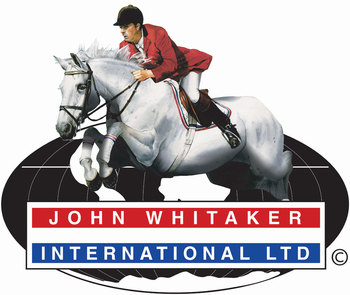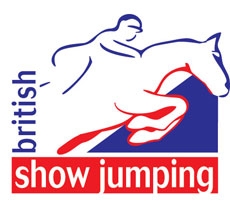Endurance Riding
Endurance riding is an equestrian sport based on controlled long-distance races. It is one of the international competitions recognized by the FEI. There are endurance rides worldwide.
There are two main types of long-distance riding, competitive trail riding and endurance rides. In an endurance ride, discussed in this article, the winning horse is the first one to cross the finish line while stopping periodically to pass a veterinary check that deems the animal in good health and fit to continue. In the United States, most endurance rides are either 50 or 100 miles (160 km) long. Shorter rides, called Limited Distance Competition, are organized for new riders to the sport or young horses being trained. There are also a few longer, usually multi-day, rides run as well. As with human marathon running, many riders will participate to improve their horse's personal best performance and consider finishing the distance with a proper vet completion record to be a "win". In the USA, the American Endurance Ride Conference (AERC) sanctions endurance rides. In the UK, Endurance GB is the governing body. Winning riders complete 100-mile (160 km) rides in 10-12 hours.
Any breed can compete, but the Arabian generally dominates the top levels because of the breed's stamina and natural endurance abilities.
Competitive trail rides are shorter, and factors other than speed are considered; horses may not come in under or over a certain time, and veterinary checks, rider behavior and other elements play a role in the placings. (See Competitive trail riding.)
Worldwide, rules vary. Endurance rides and races can be any distance, though they are rarely over 160 km for a one-day competition
Though the need to ride long distances has existed since the domestication of the horse, endurance riding as an organized activity was first developed in the United States based on European cavalry (particularly Polish and Russian WWI) and breeding program tests requiring the ability to carry 300 lb (140 kg) over 100 miles (160 km) in one day. Organized endurance riding as a formal sport began in 1955, when Wendell Robie and a group of equestrians rode from the Lake Tahoe area across the Sierra Nevada Range to Auburn in under 24 hours. They followed the historic Western States Trail. This ride soon became known as the Tevis Cup, and it remains the most difficult of any 100-mile ride in the world because of the severe terrain, high altitude, and 100-degree temperatures. Endurance riding first was brought to Europe in the 1960s
Before the ride, horses are inspected by a veterinarian to ensure they are fit to perform in the ride. Additionally, riders are given a map of the course, which shows the route, the places for compulsory halts, and any natural obstacles (such as ditches, steep hills, and water crossings).
The ride is divided into sections, with different names (legs, phases, etc.), depending on sanctioning organization. After each phase, horses are stopped for a veterinary inspection (sometimes called a "vetgate"), where they are checked for soundness and dehydration, with their pulse and respiration taken. To continue the ride, the horse must pass the examination, including reducing its heart rate below that specified for the event, typically 64 bpm, although terrain and weather may require the ride veterinarians to set a different maximum target. The riders' time keeps running until their horses reach the required target, so it is important that the horses recover as soon as possible. Any horse deemed unfit to continue (due to lameness or excessive fatigue, for example) is eliminated from further competition.
After the veterinary inspection, the horse must be held for an additional time (usually between 20-45 minutes), at which time it is fed and watered. If the veterinary inspection is on the course rather than at base camp, ride management usually delivers to the inspection location a cache of riders' personal gear, food, and water.
Riders are free to choose their pace during the competition, adjusting to the terrain and their mount's condition. Therefore, they must have a great knowledge of pace, knowing when to slow down or speed up during the ride, as well as a great knowledge of their horse's condition and signs of tiring. Riders may also choose to ride, or may dismount and walk or jog with their horse without penalty. However, they must be mounted when they cross the starting and finish lines.
The terrain riders compete over varies greatly from ride to ride. However, natural obstacles (called "hazards"), are marked on the trails with red flags on the right and white flags on the left. When so marked, riders must pass through the flags. In some areas, wilderness or undeveloped areas are difficult to find; in these places, no more than 10% of the route can be on hard-surfaced roads.
Under the rules of the FEI and AERC, the first horse to cross the line and pass the vet check as "fit to continue" is the winner. Under the rules of competitive trail riding and the endurance rules in some nations (though not international competition nor that in the USA), as well as for limited-distance endurance rides (25-49 miles in one day), the winner is determined by a combination of speed and the recovery rate of the horse or by a required standard.
Additional awards are usually given to the best-conditioned horses who finish in the top 10 for distances of 50 miles (80 km) or more. The Best Conditioned, or "BC" award is generally more prized than finishing first, as it is determined by a combination of speed, weight carried, and veterinary scores. Thus, a horse finishing fourth, but carrying a heavier rider than the first place finisher and with equal vet scores, still has a good chance to win the BC award.
Endurance became a recognized FEI discipline in 1982, and the international organization has since set down rules with the welfare of the horse as top priority. In the United States, endurance rides are sanctioned by the FEI, the AERC, or both but never the FEI alone. When both the FEI and AERC sanction a ride, the FEI rules prevail.
Two well-known American 100-mile (160 km) endurance rides are the The Western States Trail Ride, commonly known as the Tevis Cup, held in California, and the Old Dominion ride, held in Virginia. Additionally, the top riders and horses compete at the World Equestrian Games, the Endurance World Championships, and the European Endurance Championships.
One-day international competitions are 40-160 km. Multi-day competitions are longer but have daily distance limits. Those that are FEI recognized and are broken into the following categories:
CEI * (one star): minimum average distance each day is 40-79 km
CEI **: 80-119 km minimum average distance each day
CEI ***: 120+ km minimum average distance each day
CEI ****: usually 160 km, with the winners completing in 10-12 hours
Note: CEI is the notation that the competition is an FEI-approved international competition.
When first recognized by the FEI, there were only four international competitions. This grew to an average of 18 rides per year by 1998, when the first World Championships were held in the United Arab Emirates. The World Championships provided a huge boost to the sport, and, by 2005, there were 353 international competitions, second to only eventing and show jumping. Due to the huge increase in international competition, endurance is growing quite rapidly worldwide.
Endurance is much less formal than many other equestrian competitions, with riders choosing clothes for comfort. However, riders are required to dress in a way that preserves the image of the sport.
An equestrian helmet is required for nearly all sanctioned rides, including the AERC and FEI. At FEI competitions, riders must wear riding breeches or riding tights, correct footwear, and a shirt with a collar.
Endurance riders usually use a specialized saddle that is designed to be lightweight yet comfortable to horse and rider for long hours of riding. At the highest levels, it is usually a variation on the English saddle in shape, although it may have wider panels and stirrups with a wider tread. Regardless of design, endurance saddles are very light to ensure the horse does not have to carry unnecessary weight. Many endurance saddles have extra metal rings for the attachment of equipment. At lower levels, lightweight endurance designs based on western saddles are popular. Various experimental designs are also common, including treeless and flexible panel saddles.
Riders who compete in CEI rides must meet a minimum weight of 75 kg with their saddle. If the rider weighs in under 75 kg, they are required to ride with weights. Weigh-ins are generally conducted before and after a race; however, unscheduled weigh-ins can occur during the race.
Bridles for the horses may use a wide variety of bits or hackamores. Riders also often add a breastplate to keep the saddle in place while traveling over rough terrain. Use of a crupper is not common, but sometimes seen to keep the saddle from sliding forward on horses with a certain build. Protective boots may be used on a horse's legs, though boots also cause problems in some types of terrain (they may slip, can collect burrs and dirt, and if crossing water may become waterlogged, any of which can irritate the legs of the horse and lead to lameness), so use varies by the type of ride and the rider's preferences.
Equestrian News & Results
Equestrian Directory
If your are looking for an equestrian business search our online equine directory with 1000's of businesses from around the world we can help you find equine businesses & services what ever your needs.
If you are own or run an equestrian business you can add your company into the equine directory FREE. Stable Express is a leading equestrian website getting thousands of unique visitors each month.





















